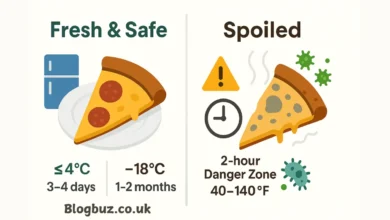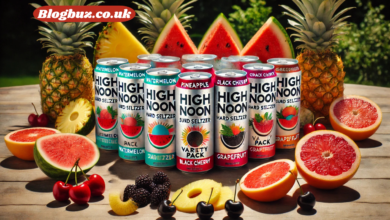Launch Your Brand: The Ultimate Guide to Energy Drink Private Labeling

The energy drink industry is booming. With consumers seeking quick boosts of energy to power through long days, workouts, or late nights, the demand for energy drinks continues to grow. As a result, more entrepreneurs and established businesses are exploring private labeling as a way to enter the market without the complexities of manufacturing their own products. If you’ve ever wondered how to launch your own energy drink brand, private labeling could be the perfect solution.
In this guide, we’ll walk you through the process of launching your brand with energy drink private labeling. From understanding the concept of private labeling to selecting the right manufacturer, packaging, and marketing strategies, this article will equip you with everything you need to start your own energy drink private label business.
What is Energy Drink Private Labeling?
Energy drink private labeling is the process of purchasing pre-made energy drinks from a manufacturer and rebranding them with your own label. Instead of investing in expensive equipment and setting up a production facility, you partner with a supplier who handles the production, quality control, and often, distribution of the energy drinks. You then focus on branding, marketing, and selling the product under your own name.
Private labeling allows you to bring your product to market quickly and efficiently, without the complexities of manufacturing. It’s an ideal option for entrepreneurs looking to enter the competitive energy drink market with lower startup costs and less risk.
Why Choose Private Labeling for Energy Drinks?
Before diving into the steps, let’s explore some of the key benefits of private labeling energy drinks:
- Lower Startup Costs: Manufacturing an energy drink from scratch requires substantial capital investment in equipment, ingredients, and labor. Private labeling allows you to sidestep these initial costs, as the manufacturer already has these resources in place.
- Faster Time to Market: With a private label energy drink, you can skip the lengthy process of product development and focus on getting your product to market quickly. The product is already formulated, and you only need to focus on branding and marketing.
- Customization Options: While private labeling typically involves using a pre-existing product, many manufacturers offer some degree of customization. You can adjust the flavor, ingredients, and packaging to better align with your target audience’s preferences.
- Focus on Branding and Marketing: Instead of worrying about the complexities of manufacturing, quality control, and supply chain management, private labeling allows you to focus on building a strong brand, executing effective marketing campaigns, and driving sales.
- Scalability: As your brand grows, you can easily scale up production without worrying about capacity or additional investments in production facilities. The manufacturer will handle the increase in demand, allowing you to focus on business development.
Steps to Launching Your Energy Drink Brand with Private Labeling
Now that you understand the benefits of energy drink private labeling, let’s explore the key steps involved in launching your own energy drink brand.
Step 1: Research the Market
Before launching your energy drink brand, it’s essential to conduct market research to understand the industry landscape and identify your target audience. The energy drink market is highly competitive, with global giants like Red Bull, Monster, and Rockstar dominating the space. However, there is also room for niche players, especially if you can cater to specific customer needs.
Ask yourself the following questions during your market research phase:
- Who is your target audience? Are you focusing on fitness enthusiasts, busy professionals, gamers, or students? Understanding your target demographic will help guide your branding, flavor selection, and marketing strategy.
- What unique value will your brand offer? How will your energy drink stand out from the competition? You might consider offering organic ingredients, low sugar options, or a focus on sustainable packaging.
- What price point are you aiming for? Energy drinks range from budget-friendly options to premium products. Determine where you want to position your brand in the market.
Step 2: Choose the Right Private Label Manufacturer
Choosing the right manufacturer is one of the most critical decisions you’ll make when launching your energy drink brand. Look for a reputable manufacturer who can produce high-quality drinks at scale and offer customization options to suit your needs.
Consider the following when selecting a manufacturer:
- Product Quality: Look for manufacturers with a proven track record of producing high-quality energy drinks. Read reviews, ask for samples, and verify that the manufacturer follows strict quality control procedures.
- Customization Options: Some manufacturers may offer customization in terms of ingredients, flavor profiles, and packaging design. Make sure the manufacturer can accommodate your preferences and offer a product that aligns with your brand vision.
- Regulatory Compliance: Ensure that the manufacturer complies with all relevant health and safety regulations, including FDA guidelines, and adheres to industry standards for energy drink production.
- Minimum Order Quantities (MOQs): Different manufacturers have different minimum order requirements. Make sure the manufacturer’s MOQs align with your budget and production needs.
Step 3: Design Your Brand Identity
Once you’ve secured a manufacturer, it’s time to focus on branding your energy drink. Your brand identity will be crucial in differentiating your product in a crowded market.
Key components of your brand identity include:
- Brand Name and Logo: Choose a memorable and catchy name that resonates with your target audience. Your logo should be eye-catching, professional, and aligned with your brand values.
- Packaging Design: Energy drink packaging plays a vital role in attracting customers. Work with a designer to create vibrant and unique packaging that reflects your brand’s personality. Consider using bold colors, modern typography, and attention-grabbing visuals.
- Labeling: In addition to the branding elements, your label must include nutritional information, ingredients, and any legal disclaimers required by law. Ensure the label is clear and professional to foster trust with your customers.
Step 4: Create a Marketing Strategy
Once your product is ready to go, it’s time to launch and promote your energy drink brand. A strong marketing strategy will be key to driving sales and building brand awareness.
Consider the following marketing strategies:
- Social Media Marketing: Use platforms like Instagram, Facebook, and TikTok to create engaging content and connect with your target audience. Influencer partnerships and user-generated content can help build brand credibility.
- Collaborations and Sponsorships: Consider partnering with fitness influencers, athletes, or events that align with your brand. Sponsoring events or creating limited-edition collaborations can generate buzz and attract new customers.
- Sampling and Promotions: Offer free samples, discounts, or promotional deals to entice new customers and build brand loyalty. Pop-up events and sampling stations at gyms, stores, or festivals can be effective ways to introduce your energy drink to potential buyers.
- E-commerce: Sell your energy drink online via your website, Amazon, or other e-commerce platforms. Having an online presence allows you to reach a broader audience and build a loyal customer base.
Step 5: Monitor Performance and Scale
After launching your brand, keep a close eye on your performance metrics, including sales, customer feedback, and market trends. If your product is well-received, you can look into scaling your business by expanding your product range, increasing production capacity, or entering new markets.
Final Thoughts
Private labeling offers an exciting opportunity to enter the energy drink market without the heavy costs and complexities associated with manufacturing. By focusing on branding, choosing the right manufacturer, and executing effective marketing strategies, you can successfully launch your own energy drink brand.
Remember, success in the energy drink industry requires more than just a great product. Understanding your target market, staying on top of trends, and constantly refining your marketing efforts will help you build a brand that stands out and thrives in this competitive space.




